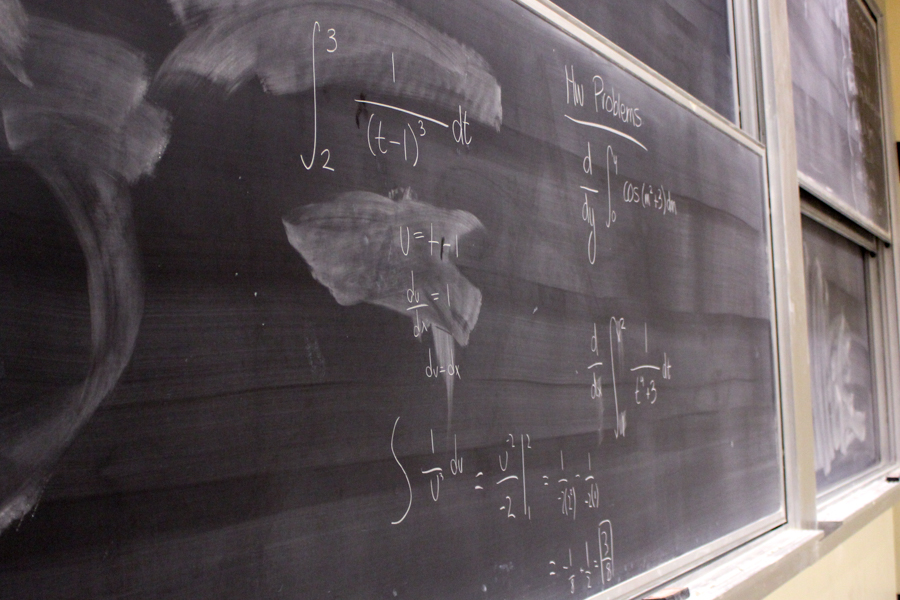
Math Association of America holds annual conference at UC Davis with special art exhibit
When an outsider thinks of the math world, images of bowties and pencil protectors might come to mind, but on Saturday, Feb. 26, at the Math Association of America (MAA) conference, Davis’ math world took a turn for the wonky.
Hosted by the UC Davis Department of Mathematics, the conference brought together professors, graduate students and undergraduate students to discuss research and present side projects with clear mathematical foundations.
There were 25 art exhibits that lined the Activities and Recreation Center (ARC) Pavilion to showcase various interpretations of mathematical artwork. The genre might have sounded oxymoronic several years ago, but has become increasingly popular with “maker movements” and interactive STEM exhibits, like the Exploratorium.
Gwen Fisher, a mathematician and former associate professor at California Polytechnic State University, San Luis Obispo, turns highly abstracted mathematical forms into beaded guides. While in college, Fisher was always interested in both math and art, and longed for a class that would combine these interests. She eventually found a unique way to portray the junction of these two fields through her beaded patterns, which have given many people access to this world.
The beaded patterns provide a step-by-step guide to creating the complex forms. Fisher said this process is important to her work because it allows her audience to tangibly explore each figure with a level of detail that most would not otherwise notice.
“I think of art as [a] process, not just as arriving at an object,” Fisher said.
Although math visualizations have become popular in the classroom, Santa Clara University professor Frank Farris was quick to note that this practice is different than the mathematical art on display at the conference.
“Math is real and perfect, but [it is a] limited part of human knowledge and art is more human,” Farris said. “Math art is the intersection of real and platonic things. Teaching classes with software shows students the math, but in the realm of human experience.”
According to Farris, mathematical art is the expression of passion, not too dissimilar from other forms of art. To Shirley Yup, professor at California State University East Bay, mathematical art exposes people to a passion that is often hidden in a traditional classroom.
“If I were to ask if math is a creative subject, most would say no,” Yup said.
When Yup started college she didn’t think of math as creative. She wanted to be an engineer in the Peace Corps, and took math classes out of necessity rather than enjoyment. Her views of math changed, however, when she started taking higher level art classes that incorporated the mathematical concept of proofs.
“I was put in [a class] with proofs and I was like, ‘Wow, there are no rules here,’” Yup said. “Two people can arrive at the same answer in completely different ways.”
Since her own change of course — from engineering to mathematics — Yup has put a lot of energy into displaying some of the wonder that she finds in the field, in the hopes of attracting more students to the creativity she sees in math.
Since, generally, more people are interested in art rather than math, Yup hoped a math exhibit at the conference might interest those not traditionally represented in the math world.
“People find art more acceptable than math,” Yup said. “But there are so many of us in the mindset that math is beautiful and creative, [at the math conference] they [showcased] what they find beautiful.”
Math and art are two fields typically thought of as existing on opposite sides of a spectrum: math as logical and art as creative. Although the goals of these two fields might differ, a closer look at the math world might reveal that the bowtied professor and the art student are not as different as one might initially think.
Written by: Anna Nestel — features@theaggie.org



